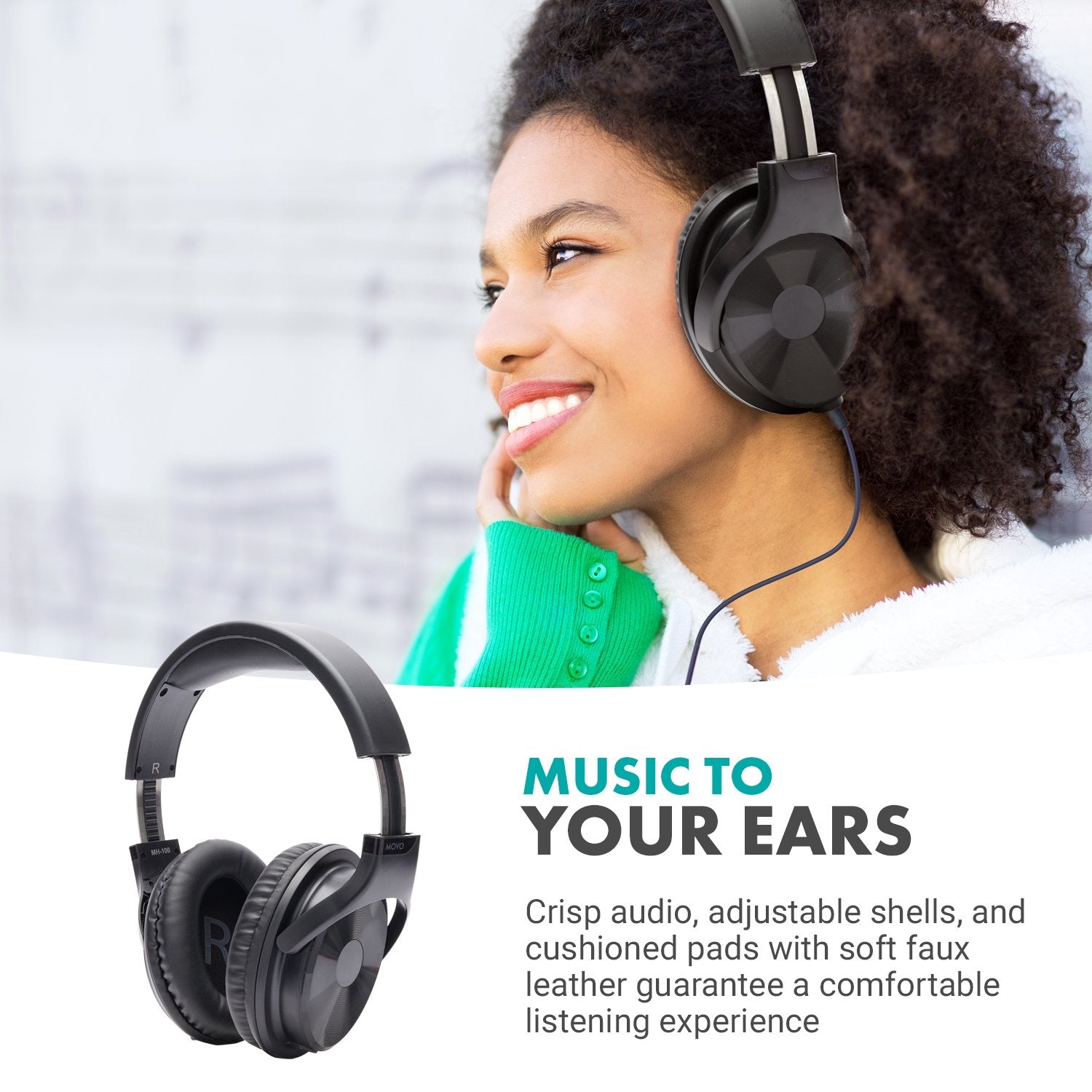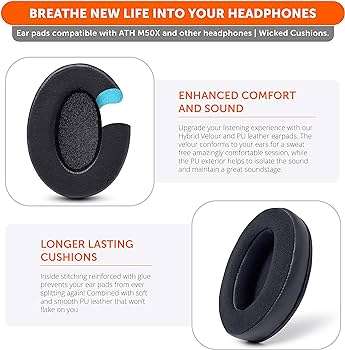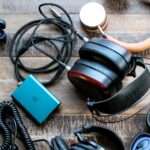Are your headphone cushions providing the comfort you deserve? Though they might appear insignificant, headphone cushions significantly impact comfort and sound quality. So, what sets some cushions apart, and how can you choose the ones that best fit your listening preferences?
Headphone cushions, typically made from materials like memory foam or protein leather, differ in design and texture, providing distinct levels of comfort and longevity. Memory foam provides a snug fit and blocks out noise, while other materials enhance breathability for extended use.
Knowing the benefits and limitations of each type is key to selecting cushions that meet your comfort and audio expectations. But there’s more to explore when choosing the ideal cushion for your headphones.
Curious about headphone comfort? Let’s examine the top options and see what experts recommend for the best listening experience.
Brief History of Headphone Cushions
The concept of headphone cushions dates back to the early 20th century when telephone operators and radio operators primarily used headphones. Initially, cushions were made from basic materials like cloth or leather, providing minimal comfort compared to today’s advanced options.
Importance of Headphone Cushions
Comfort and Longevity
One of the primary functions of headphone cushions is to provide comfort during prolonged usage. Imagine settling in for a long gaming session or an immersive music listening experience, only to be interrupted by discomfort caused by poorly cushioned ear cups.
Quality cushions alleviate pressure on the ears and head, allowing you to enjoy your favorite content for hours on end without fatigue or discomfort.
Sound Quality and Noise Isolation
In addition to comfort, headphone cushions play a crucial role in sound quality and noise isolation. Properly cushioned ear cups create a seal around the ears, preventing sound leakage and external noise intrusion.
This seal enhances bass response and audio clarity, enabling a fully immersive listening experience by minimizing external noise distractions.
Prevention of Ear Fatigue
Furthermore, well-designed headphone cushions help prevent ear fatigue, a common issue experienced during extended listening sessions.
By distributing pressure evenly and shielding the ears from hard surfaces, these cushions reduce strain and make long listening sessions comfortable.
Types of Headphone Cushions
Headphone cushions come in various styles to accommodate different headphone designs and user preferences.
Over-ear Cushions
Over-ear cushions envelop the entire ear, providing ample cushioning and creating a seal to enhance sound isolation. They are popular among audiophiles for their immersive sound experience.
On-ear Cushions
On-ear cushions sit directly on the ears, offering a balance between comfort and portability. They are commonly found in smaller, more compact headphones.
In-ear Tips
In-ear tips, also known as earbuds, are small silicone or foam attachments that fit inside the ear canal. While not technically cushions, they serve a similar purpose by providing comfort and sound isolation.
Materials Used in Headphone Cushions
The choice of materials greatly influences the comfort, durability, and sound quality of headphone cushions.
Memory Foam
Memory foam molds to the shape of the user’s ears, providing personalized comfort and excellent noise isolation. It’s a popular choice for premium headphones.
Leather
Leather cushions offer a luxurious feel and durability. They provide a tight seal for improved sound isolation but may cause discomfort during prolonged use in warm environments.
Velour
Velour cushions are soft and breathable, making them ideal for long listening sessions. They are less isolating than leather but offer superior comfort, especially in hot climates.
Silicone
Silicone cushions are lightweight and hypoallergenic, making them suitable for users with sensitive skin. They provide a secure fit and are easy to clean but may lack the plushness of foam or velour.

Credit: www.amazon.com
Factors to Consider When Choosing Headphone Cushions
Several factors should be taken into account when selecting headphone cushions to ensure the best possible listening experience.
Compatibility
When selecting replacement cushions for your headphones, ensure compatibility with your specific headphone model. Check the manufacturer’s specifications or consult customer support to determine the correct size and type of cushions for your headphones.
Choosing the right cushions ensures a proper fit and optimal performance.
Comfort
Comfort is paramount, especially for users who wear headphones for extended periods. Cushions should feel soft against the skin and distribute pressure evenly to prevent discomfort.
Durability
High-quality materials and construction are essential for durability, especially for users who frequently travel or engage in rigorous activities while wearing headphones.
Noise Isolation
Effective noise isolation can significantly enhance the listening experience by reducing external distractions. Cushions with a tight seal and thick padding offer superior noise isolation.
Breathability
Breathable materials like velour or perforated leather allow air to circulate, preventing heat buildup and sweatiness during prolonged use.
Benefits of Upgrading Headphone Cushions
Upgrading headphone cushions can yield several benefits beyond mere comfort.
Enhanced Comfort
New cushions can rejuvenate old headphones, providing a fresh feel and eliminating discomfort caused by worn-out padding.
Improved Sound Quality
Properly fitting cushions create a better seal, improving bass response and overall sound clarity.
Prolonged Headphone Lifespan
Replacing worn-out cushions can extend the lifespan of headphones by protecting internal components from damage and preventing discomfort.
How to Replace Headphone Cushions
Replacing headphone cushions is a straightforward process that can breathe new life into old headphones.
Step-by-step Guide
- Remove the old cushions by gently pulling them away from the headphone frame.
- Clean the headphone surface to remove any debris or adhesive residue.
- Align the new cushions with the headphone frame and press firmly to secure them in place.
- Ensure cushions are properly seated and provide a tight seal around the ears.
Tips for Proper Installation
- Refer to the manufacturer’s instructions for specific guidance on replacing cushions.
- Take care not to damage the headphone drivers or cables during the replacement process.
- Test the headphones after installation to ensure proper fit and sound quality.
Maintenance Tips for Headphone Cushions
Proper maintenance is essential for prolonging the life of headphone cushions and ensuring optimal performance.
Regular Cleaning
Cleaning your headphone cushions regularly is essential to maintaining optimal hygiene and prolonging their lifespan. Use a soft, damp cloth or mild cleaning solution to gently wipe away dirt, oil, and debris from the cushions.
Avoid harsh chemicals or abrasive materials, that damage the cushion material and affect comfort and performance.
Avoid Moisture and Heat
Moisture and heat can compromise the integrity of headphone cushions and promote the growth of bacteria and mold. Store your headphones in a cool, dry place away from direct sunlight and moisture-prone environments.
If your cushions become damp or sweaty during use, allow them to air dry completely before storing them or using them again.
Cleaning Techniques
Regularly clean headphone cushions with a mild detergent and water solution to remove dirt, oil, and sweat buildup. Avoid using harsh chemicals or abrasive cleaners that may damage the cushion material.
Storage Recommendations
Store headphones in a cool, dry place away from direct sunlight and moisture to prevent deterioration of cushion materials. Consider using a protective case when traveling to prevent damage.
Popular Headphone Cushion Brands
Several brands specialize in manufacturing high-quality headphone cushions to suit different preferences and budgets.
Bose
Bose offers a range of replacement cushions designed to fit their popular headphone models, ensuring compatibility and comfort.
Sony
Sony provides a variety of cushion options for their headphones, including memory foam and protein leather, to cater to diverse user needs.
Sennheiser
Sennheiser’s replacement cushions are known for their durability and comfort, enhancing users’ overall listening experience.
Beats by Dre
Beats by Dre offers stylish replacement cushions in various colors and materials, allowing users to customize their headphones to suit their style.

Credit: www.movophoto.com
DIY Headphone Cushion Replacement
For those who enjoy DIY projects, replacing headphone cushions at home can be a rewarding experience.
Materials Needed
- Replacement cushions
- Adhesive (if necessary)
- Cleaning supplies (mild detergent, water, soft cloth)
Step-by-step Instructions
- Remove the old cushions as described in the replacement guide.
- Clean the headphone surface and cushion mounting area thoroughly.
- Align the new cushions with the headphone frame and secure them in place using adhesive if required.
- Allow the adhesive to dry completely before using the headphones.
Headphone Cushions for Different Activities
Different activities may require specific types of headphone cushions to ensure comfort and performance.
Gaming
Gaming headphones often feature large, plush cushions for maximum comfort during long gaming sessions. Memory foam cushions with cooling gel are popular among gamers for their comfort and breathability.
Traveling
Travel headphones should have noise-canceling cushions to block out ambient noise during flights or train rides. Lightweight and compact cushions are ideal for travel headphones to minimize bulkiness.
Exercise
Headphones designed for exercise should have sweat-resistant cushions to withstand intense workouts. Silicone or rubberized cushions provide a secure fit and prevent moisture buildup during physical activity.
Headphone Cushions for Specific Needs
Certain users may have specific requirements when it comes to headphone cushions.
Noise-canceling Cushions
For users who frequently work in noisy environments or travel frequently, noise-canceling cushions are essential for maintaining focus and reducing fatigue.
Sweat-resistant Cushions
Athletes and fitness enthusiasts benefit from sweat-resistant cushions that can withstand perspiration and moisture without compromising comfort or sound quality.
Impact of Headphone Cushions on Sound Quality
The fit and material of headphone cushions can significantly impact the sound quality of headphones.
Importance of Proper Fit
Properly fitting cushions create a tight seal around the ears, preventing sound leakage and enhancing bass response.
Materials that Affect Sound
Materials like memory foam and leather provide excellent noise isolation and can enhance the overall sound clarity of headphones.
Headphone Cushions and Ear Health
Taking care of your ears is essential, especially for frequent headphone users.
Reducing Ear Fatigue
Well-padded cushions distribute pressure evenly around the ears, reducing fatigue and discomfort during extended listening sessions.
Preventing Ear Infections
Breathable cushion materials like velour help prevent moisture buildup and reduce the risk of ear infections caused by trapped sweat.
Environmental Impact of Headphone Cushions
As consumers become more environmentally conscious, the materials used in headphone cushions are also evolving.
Sustainable Materials
Some manufacturers are opting for sustainable materials like recycled plastics or organic fabrics to reduce their environmental footprint.
Recycling Options
Many headphone manufacturers offer recycling programs for old cushions to minimize waste and promote sustainability.
Frequently Asked Questions About Headphone Cushions
How Do I Know If My Headphone Cushions Need Replacing?
If your headphones sound muffled or your ears hurt, it might be time to replace the cushions.
Can I Replace My Headphone Cushions Myself?
Yes, you can. Most headphone cushions have easy-to-follow instructions for replacement that you can do yourself.
How Often Should I Replace My Headphone Cushions?
It’s recommended to replace your cushions every 6 months to a year, depending on the quality and frequency of use.
What Are The Benefits Of Replacing Headphone Cushions?
Replacing your headphone cushions can improve sound quality, comfort, and hygiene, making your listening experience better.
Conclusion
Headphone cushions are an essential accessory that enhances the comfort level of using headphones. They provide an added layer of protection, and noise isolation, and maintain hygiene levels. Cushions come in different sizes, shapes, and materials, meaning every individual can select one best suited for their headphones.
When purchasing headphone cushions, consider factors such as comfort, functionality, and cost to ensure that you buy the perfect cushion that suits your needs. Remember, headphone cushions are an affordable and effective way to improve your audio experience and extend the life of your headphones.

A passionate tech blogger and the founder of Best Tech View, a dynamic platform dedicated to all things technology. With a keen interest in the tech, Ahmad strives to provide insightful and engaging content on the latest tech trends, and breakthroughs.



